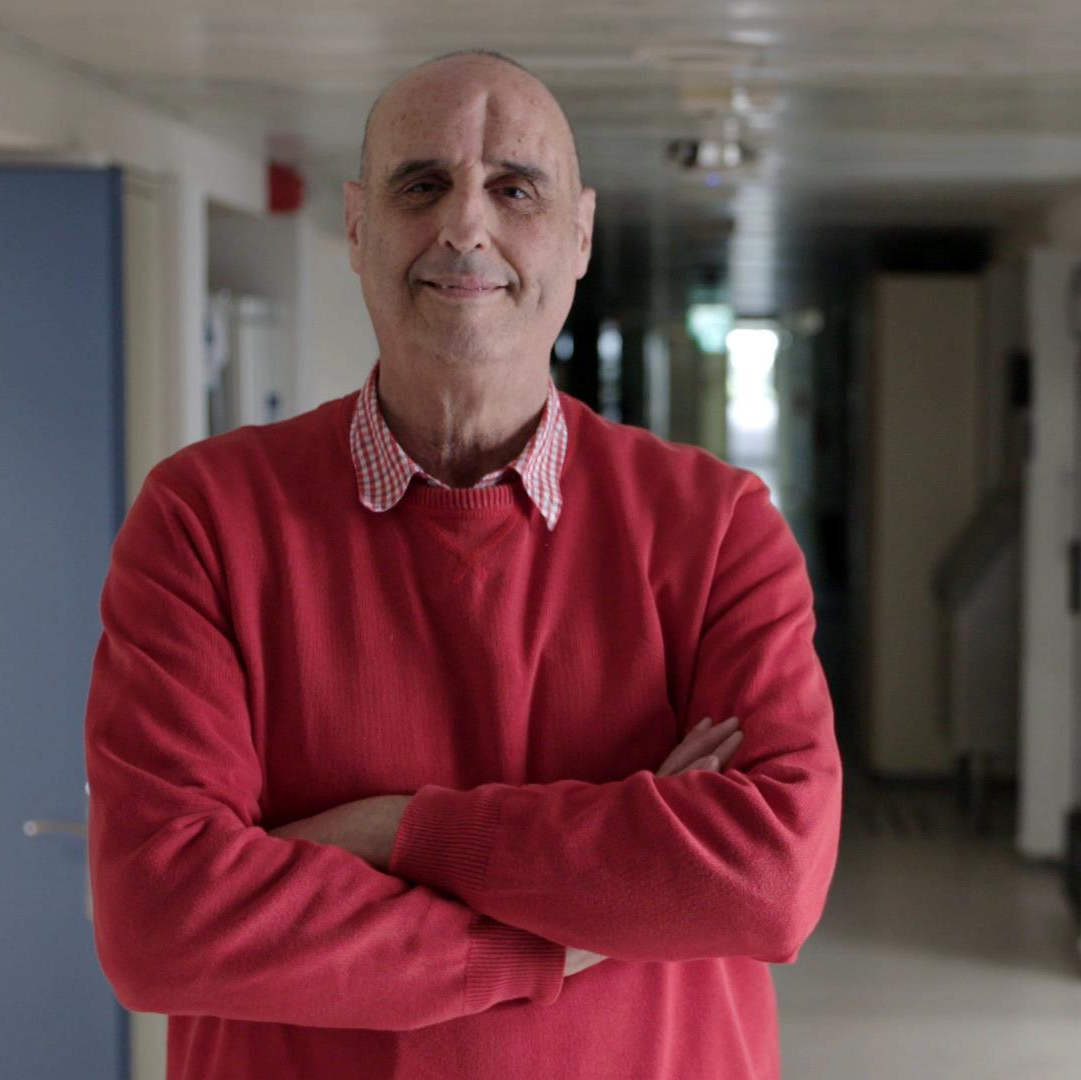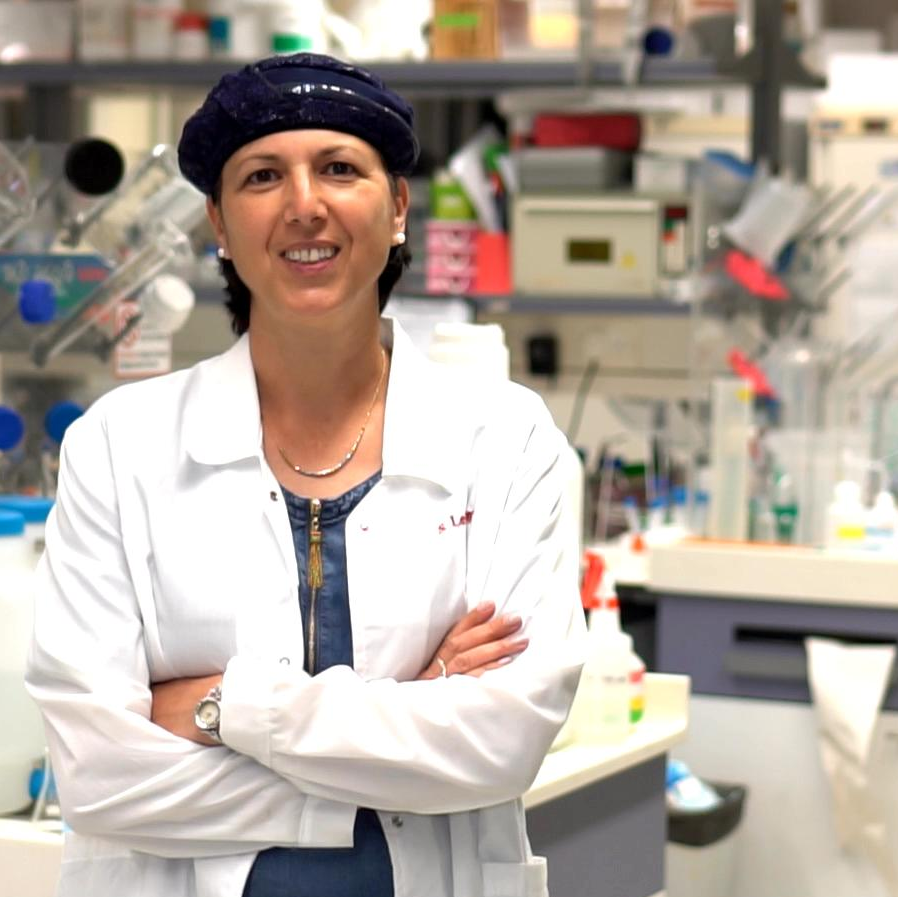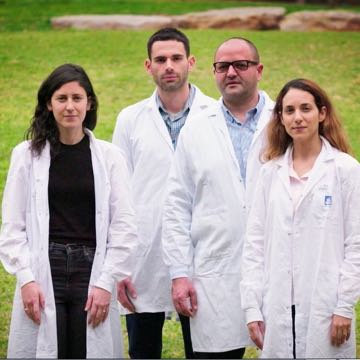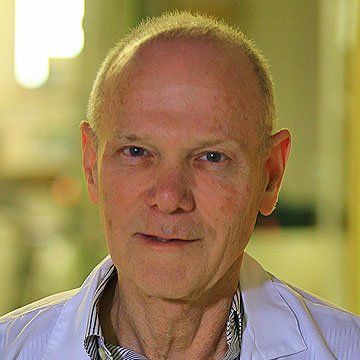The Rappaport Prize for Excellence in the field of Biomedical Research is awarded to scientists for groundbreaking or innovative research which has the potential to advance the health of mankind. The research must have real and applicable therapeutic implications for human welfare. The Prize is intended to encourage scientists to undertake scientific and clinical research that could significantly advance a specific medical field.
The Laureates
Prof. Ohad Birk
2025
Established researcher
Prof. Ziv Shulman
2025
Promising researcher
Doctoral (PhD) Students
2025
Outstanding Doctoral (PhD) Students
Prof. Ashraf Brik
2024
Established researcher
Prof. Yifat Merbl
2024
Young and Promising researcher
Doctoral (PhD) Students
2024
PhD student
Prof. Nissim Benvenisty
2023
Established researcher
Prof. Eli Pikarsky
2023
Established researcher
Prof. Noam Stern-Ginossar
2023
Young and Promising researcher
Doctoral (PhD) Students
2023
Outstanding Doctoral (PhD) Students
Prof. Roy Kishony
2022
Established researcher
Prof. Shalev Itzkovitz
2022
Young and Promising researcher
Doctoral (PhD) Students
2022
PhD Student
Prof. Yehudit Bergman
2021
Prize for an Established Researcher
Prof. Rotem Sorek
2021
Promising Researcher
Doctoral (PhD) Students
2021
PhD Student
Prof. Ofer Mandelboim
2020
Prize for an Established Researcher
Tamar Geiger
2020
Promising researcher
Doctoral (PhD) Students
2020
PhD Student
Prof. Ehud Gazit
2019
Prize for an Established Researcher
Prof. Tsvee Lapidot
2019
Prize for a Senior Bio-Medical Researcher
Prof. Asya Rolls
2019
Promising researcher
Dr. Ayelet Erez
2019
Prize for Promising Bio-Medical Researcher
Doctoral (PhD) Students
2019
Prize for Doctoral (PhD) Students
Prof. Shulamit Levenberg
2018
Established researcher
Prof. Avigdor Schertz & Prof. Yoram Solomon (Z"L)
2018
Prize for an Established Researcher
Prof. Tal Dvir
2018
Young and Promising researcher
Doctoral (PhD) Students
2018
Outstanding Doctoral (PhD) Students
Dr. Ido Amit
2016
Promising researcher
Prof. Hermona Soreq
2015
Established researcher
Dr. Eran Elinav
2015
Young and Promising researcher
News & Updates
- A living “library” of highly functional human liver cells has been grown in the lab by an international research group headed by Prof. Yaakov Nahmias, Rappaport laureate for young bio medical researcher 2014 from the Hebrew University of Jerusalem.
This achievement could advance a variety of discoveries and applications – from studying drug toxicity to creating bio-artificial liver support for patients awaiting transplants.
The team managed to develop a new approach to rapidly expand the number of human liver cells in the laboratory without losing their unique metabolic function, called by liver experts a “breakthrough.”
“Our technology will enable thousands of laboratories to study fatty liver disease, viral hepatitis, drug toxicity and liver cancer at a fraction of the current cost.” Nahmias noted that genetic modifications preclude using the hepatocytes for transplantation, “but we may have found the perfect cell source for the bio-artificial liver project.”
The liver cells represent varying genetic backgrounds for scientific, clinical and pharmaceutical development.
http://new.huji.ac.il/en/article/28143
Live video with Prof. Yaakov Nahmias
'Humans-on-a-Chip'
- Dr. Eran Elinav, Rappaport laureate for biomedical young researcher 2015, published a ground-breaking study: Which is more likely to raise your blood sugar levels: Sushi or Ice cream?
According to a Weizmann Institute study reported in the journal Cell, the answer varies from one person to another. The study, which continuously monitored blood sugar levels in 800 people and approximately 46,000 meals, revealed that the bodily response to all foods was highly individual.
The study, called the Personalized Nutrition Project (www.personalnutrition.org), was conducted by the groups of Dr. Eran Elinav, laureate of the Rappaport 2015 Bio medical young researcher of the Immunology Department and Prof. Eran Segal of the Computer Science and Applied Mathematics Department in the Weizmann Institute. The scientists found that different people responded very differently to both simple and to complex meals. For example, a large number of the participants’ blood sugar levels rose sharply after they consumed a standardized glucose meal, but in many others, blood glucose levels rose sharply after they ate white bread, but not after glucose. Elinav: “Our aim in this study was to find factors that underlie personalized blood glucose responses to food. We used that information to develop personal dietary recommendations that can help prevent and treat obesity and diabetes, which are among the most severe epidemics in human history.”
The scientists generated an algorithm for predicting individualized response to food based on the person’s lifestyle, medical background, and the composition and function of his or her microbiome. In a follow-up study of another 100 volunteers, the algorithm successfully predicted the rise in blood sugar in response to different foods, demonstrating that it could be applied to new participants. The scientists were able to show that lifestyle also mattered. The same food affected blood sugar levels differently in the same person, depending, for example, on whether its consumption had been preceded by exercise or sleep.
In the final stage of the study, the scientists designed a dietary intervention based on their algorithm; this was a test of their ability to prescribe personal dietary recommendations for lowering blood glucose level responses to food. Volunteers were assigned a personalized “good” diet for one week, and a “bad” diet – also personalized – for another. Both good and bad diets were designed to have the same number of calories, but they differed between participants. Thus, certain foods in one person’s “good” diet were part of another’s “bad” diet. The “good” diets indeed helped to keep blood sugar at steadily healthy levels, whereas the “bad” diets often induced spikes in glucose levels —all within just one week of intervention. Moreover, as a result of the “good” diets, the volunteers experienced consistent changes in the composition of their gut microbes, suggesting that the microbiome may be influenced by the personalized diets while also playing a role in participants’ blood sugar responses.
A video animation describing the study
The scientists are currently enrolling Israeli volunteers for a longer-term follow-up dietary intervention study that will focus on people with consistently high blood sugar levels, who are at risk of developing diabetes, with the aim of preventing or delaying this disease. To learn more, please visit www.personalnutrition.org .
- Dr. Jacob Hanna from Weizmann Institute, Rappaport laureate for a young bio-medical researcher 2013, published in Science journal his lab ground breaking findings.
According to Dr. Hanna " In this study we discovered a critical pathway that allows the stem cell state to turn itself off. This has crucial importance, since embryonic pluripotency is a transient state and it is dangerous if self-renewal is not turned off during development".
In 2015 Dr. Hanna's lab published another innovative paper in the journal Cell: "For the first time we were able to differentiate human skin derived stem cells into progenitors of human sperm and egg". This paper has been recently selected as “Best of 2015 papers published by Cell” and has received great media coverage.
Link: Israel Channel 1 news visit to Dr. Hanna's lab (Hebrew)
After being awarded the Rappaport Prize, Dr, Hanna has become an editorial board member of the following journals:
Stem Cells, by AlphaMed press
Journal of Stem Cell Research and Medicine
Cell Research
Genomics, Proteomics and Bioinformatics
Stem Cell Reviews and Reports
Stem Cell Reports
- First time collaborations between the Rappaport laureates for bio-medical researchers carry huge impact on Science and Medicine.
Dr. Eran Elinav (2015 Rappaport laureate for a young researcher) and Dr. Ido Amit (2016 Rappaport laureate for a young researcher) from Weizmann institute published 2 groundbreaking studies.
In their first study the researchers found some of the mechanisms and genes involve in disrupted fetal immune system development and how it may contribute to later appearance of certain neuro developmental disorders. The study may explain, among other things, how the mother’s infection with the cytomegalovirus (CMV) during pregnancy, affects her and her fetus’s immune system, increases the risk that her offspring will develop autism or schizophrenia, sometimes years later.
In their other study, published in the prestige Cell magazine:
By using advanced technologies, the researchers found significant populations of immune cells in the gastrointestinal tract, carry critical importance in protecting against infections from inflammatory diseases such as inflammatory bowel disease, are more complex than had been known until today. The teams first characterized 15 new populations of immune cells in the intestine and half of them also are highly affected by existing bacteria in the gut.
- International partnership led by Prof. Yaakov Nahmias, Rappaport lauriate for Young Bio-Medical investigator 2014, unravels the mechanism by which Hepatitis C Virus (HCV) reprograms human metabolism, and identifies new pathways of anti-viral resistance.
Viral infection is one of the leading medical challenges of the 21st Century, ranging from the Hepatitis C Virus (HCV) epidemic affecting 3% of the global population, to recent outbreaks of West Nile, Zika, and Ebola viruses.
Viruses are parasites that lack the basic metabolic machinery needed to replicate. To get around this problem, they hijack the metabolic machinery of their hosts in order to complete their lifecycle and propagate. However, scientists still don’t have a good understanding of the metabolic interplay between viruses and the organisms they infect. This is mainly due to the complex interplay between human genes and metabolic processes.
Now, in new research appearing in the journal Nature Chemical Biology, an international research group led by the Hebrew University of Jerusalem systematically identified an array of genetic switches that controls the metabolic response to Hepatitis C Virus infection. By carefully selecting drugs that target these genetic switches, the researchers were able to show how these genes control metabolic processes, such as glucose and lipid metabolism, and establish how these processes affect the virus lifecycle. Surprisingly, while some metabolic processes were beneficial for the virus, for example by providing it with building blocks for its genetic material allowing it to replicate faster, other metabolic processes were surprisingly anti-viral, disturbing the viral lifecycle.
“This is the first indication that our cells can block replication of Flaviviridae viruses like HCV and Zika by denying them from critical building blocks the viruses need to survive,” said Prof. Yaakov Nahmias, Director of the Alexander Grass Center for Bioengineering at the Hebrew University of Jerusalem, who led the study. “Our results present a new approach to treat virus infection by targeting the genetic regulation of metabolic processes on which the virus rely.”
Nuclear Receptors
Metabolism is a complex phenomenon that is primarily regulated by genetic switches called nuclear receptors. Nuclear receptors are a family of proteins found within cells that are activated by metabolites such as fatty acids or glucose, acting as sensors that allow cells to sense and respond to changes in nutrition (e.g. breakfast) by regulating the expression (i.e. activation) of hundreds of genes.
Viruses such as HCV can interfere with this metabolic regulation. When this happens, it results in fatty liver disease and diabetes in infected patients.
To find the mechanism by which viruses such as HCV can interfere with metabolic regulation, the researchers used a new laboratory model of human liver cells developed by Prof. Nahmias. By mapping out the metabolism of both infected liver cells and normal liver cells, they were able to focus on disturbed metabolic processes, and identify the nuclear receptors responsible for their dysregulation.
Once the researchers identified the genetic switches controlling the disturbed metabolic processes, they blocked each nuclear receptor using pharmaceuticals, and studied the effects of this inhibition on the virus. While blocking glucose metabolism was detrimental to the virus, blocking lipid metabolism had the reverse effect, actually increasing HCV replication. These findings were validated in a small cohort of HCV patients.
The authors point out that the Flaviviridae family of viruses, which includes Hepatitis C, Dengue, West Nile, Yellow Fever, and Zika viruses, were previously considered to be expert metabolic engineers that optimized the hijacking of host metabolic machinery to create more viruses. “It was quite surprising to see that human liver cells could use metabolic processes to resist viral infection,” said Prof. Jörg Timm, a co-author from the Institute of Virology at the University of Düsseldorf. “It went against our common understanding of viruses as expert metabolic engineers, suggesting new avenues to target virus infection.”
Participating institutions include The Hebrew University of Jerusalem, Harvard Medical School, Broad Institute of MIT and Harvard, Tel Aviv University, University Duisburg-Essen, and the University of Düsseldorf.
- For the first time – researchers revealed a connection between anxiety and metabolic disorders at the molecular level; the discovery opens new possibilities for detecting and treating both symptoms .
Metabolic and anxiety-related disorders both pose a significant healthcare burden, and are in the spotlight of contemporary research and therapeutic efforts. Although intuitively we assume that these two phenomena overlap, the link has not been proven scientifically.
Now, a team of researchers from the Hebrew University of Jerusalem, headed by Prof. Hermona Soreq, Senior Laureate of Rappaport Bio-Medical Research prize 2015, revealed the molecular elements that bridge anxiety and metabolism – a type of microRNA that influences shared biological mechanisms.
"We already know that there is a connection between body and mind, between the physical and the emotional, and studies show that psychological trauma affects the activity of many genes. Our previous research found a link between microRNA and stressful situations - stress and anxiety generate an inflammatory response and dramatically increase the expression levels of microRNA regulators of inflammation in both the brain and the gut, for example the situation of patients with Crohn's disease may get worse under psychological stress, "says Prof. Soreq. "In the present study, we added obesity to the equation. We revealed that some anxiety-induced microRNA are not only capable of suppressing inflammation but can also potentiate metabolic syndrome-related processes. We also found that their expression level is different in diverse tissues and cells, depending on heredity and exposure to stressful situations," explains Prof. Soreq.
The family of microRNA genes is part of the human genome, which was considered until not too long ago as "junk-DNA". However, microRNAs are now known to fulfill an important role in regulating the production process of proteins by other genes. These tiny RNA molecules, which are one percent of the average size of a protein-coding gene, act as suppressors of inflammation and are able to halt the production of proteins.
The research paper, published in the journal Trends in Molecular Medicine, details the evidence linking microRNA pathways, which share regulatory networks in metabolic and anxiety-related conditions. In particular, microRNAs involved in these disorders include regulators of acetylcholine signaling in the nervous system and their accompanying molecular machinery.
Metabolic disorders, such as abdominal obesity and diabetes, have become a global epidemic. In the USA, the prevalence of metabolic syndrome is as high as 35 percent. In other countries, such as Austria, Denmark and Ireland it affects 20-25 percent of the population.
Anxiety disorders are harder to quantify than metabolic ones. They include obsessive-compulsive disorder (OCD), post-traumatic stress disorder (PTSD) and phobia. The full burden of the anxiety spectrum is difficult to assess, due to under-diagnosis and poorly defined pathophysiological processes.
This newly revealed link offers novel opportunities for innovative diagnoses and treatment of both metabolic and anxiety-related phenomena.
"The discovery has a diagnostic value and practical implications, because the activity of microRNAs can be manipulated by DNA-based drugs," explains Prof. Soreq. "It also offers an opportunity to reclassify ‘healthy’ and ‘unhealthy’ anxiety and metabolic-prone states, and inform putative strategies to treat these disorders."














































